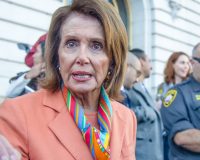In the early summer of 1776, the British were still in control of America. The taxation was out of control, decrees were being brought down to bare against the colonists, and Britain’s mighty Red Coats were marching the streets day and night. One could lay in bed before sleep came about and hear the clicking of heels and shouts of orders by these red coats.
A year earlier with Britain taking control of most things in the colonies, many brave men got together and decided on the Declaration of the Causes and of the Necessity of Taking up Arms. As its title implies, it was a justification for armed resistance to England’s abusive treatment of the colonies, with a chronicle of outstanding grievances.
With the events at Lexington and Concord already three months old, Congress adopted the resolution in Philadelphia on July 6th 1775. It’s no secret that the Crown’s lack of movement would precipitate the Declaration of Independence the following year. The rather obvious, but critical, difference was that the Declaration of Causes merely threatened King George III with colonial independence while the Declaration of Independence severed ties unequivocally. As for Dickinson’s role in it, contrary to some sources he did not actually vote against the Declaration of Independence. He simply remained absent while Congress voted on it. What’s more, he subsequently played an active political and military role in the colonial cause.
On June 11,Thomas Jefferson was appointed to a five-man committee–alongside John Adams of Massachusetts, Roger Sherman of Connecticut, Benjamin Franklin of Pennsylvania and Robert R. Livingston of New York–that was charged with drafting a formal statement justifying the break with Great Britain. Jefferson was the only southerner on the committee, and had arrived in Philadelphia accompanied by three of his many slaves. Still, it was he who was given the task of drafting the Declaration of Independence, which would become the foremost statement of human liberty and equality ever written. According to an account Jefferson wrote in 1823, the other members of the committee “unanimously pressed on myself alone to undertake the draught [sic]. I consented; I drew it; but before I reported it to the committee I communicated it separately to Dr. Franklin and Mr. Adams requesting their corrections…I then wrote a fair copy, reported it to the committee, and from them, unaltered to the Congress.”
The body of Jefferson’s draft contained a list of grievances against the British crown, but it was its preamble that would strike the deepest chords in the minds and hearts of future Americans: “We hold these truths to be self-evident; that all men are created equal; that they are endowed by their Creator with certain inalienable rights; that among these are life, liberty and the pursuit of happiness; that to secure these rights, governments are instituted among men, deriving their just powers from the consent of the governed.”
The Continental Congress reconvened on July 1, and the following day 12 of the 13 colonies adopted Lee’s resolution for independence. The process of consideration and revision of Jefferson’s declaration (including Adams’ and Franklin’s corrections) continued on July 3 and into the late morning of July 4, during which Congress deleted and revised some one-fifth of its text. The delegates made no changes to that key preamble, however, and the basic document remained Jefferson’s words. Congress officially adopted the Declaration of Independence later on July 4.Despite his many later accomplishments, Jefferson’s principal legacy to the United States arguably remains the Declaration of Independence, the eloquent expression of liberty, equality and democracy upon which the country was founded.
The
Declaration of Independence is the statement adopted by the Second Continental Congress meeting at Philadelphia, Pennsylvania on July 4, 1776, which announced that the thirteen American colonies,
[2] then at war with the Kingdom of Great Britain, regarded themselves as thirteen newly independent
sovereign states, and no longer under British rule. Instead they formed a new nation—the
United States of America.
John Adams was a leader in pushing for independence, which was passed on July 2 with no opposing vote cast. A committee of five had already drafted the formal declaration, to be ready when Congress voted on independence. And in this, known as one of the most powerful written documents world-wide, these United States had begun, and on this journey, now over 240 years is still recognized world-wide and nationally as this has been called “one of the best-known sentences in the English language”, containing “the most potent and consequential words in American history” The passage came to represent a moral standard to which the United States should strive.
We may spend our day celebrating by barbecues, family picnics, watching fireworks at night, or just giving a salute to a serviceman or woman, but For America, for every burger and hot dog barbecued, for every crack of a red, white and blue firecracker, we are celebrating the beginning of the most amazing and most beautifully blessed country the world has ever known. Let us continue to flourish, celebrate in God’s abundance, and the knowledge that with those words, that promise, that Declaration, Every man, woman, and child shall be FREE!!!





















Join the conversation!
We have no tolerance for comments containing violence, racism, vulgarity, profanity, all caps, or discourteous behavior. Thank you for partnering with us to maintain a courteous and useful public environment where we can engage in reasonable discourse.